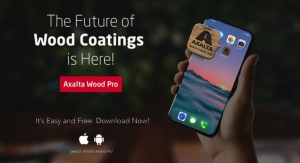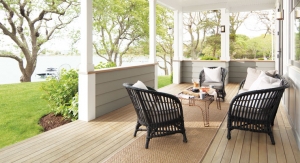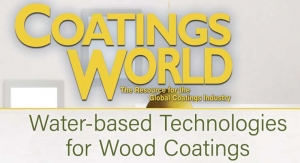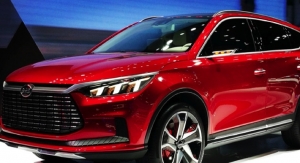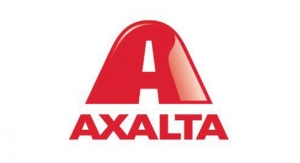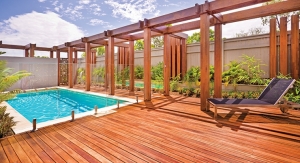02.16.16
According to the latest research study released by Technavio, the global acrylic-based wood coatings market is predicted to reach close to USD 4 billion in revenue by 2019.
This research report titled ‘Global Furniture Wood Coatings Market 2015-2019’ provides an in-depth analysis of market growth in terms of revenue and emerging market trends. This market research report also includes up to date analysis and forecasts for various market segments and all leading countries.
“Improved versions of acrylic-based wood coatings with enhanced performance characteristics are driving the global; furniture wood coatings market. For instance, Dow offers self-crosslinking acrylic and acrylic-polyurethane resins for water-borne wood finishes. Water-borne self-crosslinking acrylic resins offer key benefits such as chemical resistance, high durability, low volatile organic compound (VOC) emissions, and quicker release of coalescence on blending with polyurethane dispersions. Owing to these favorable market conditions, acrylic-based water-borne wood coatings are expected to post a CAGR of 6% over the next four years,” said Piyush Mishra, one of Technavio’s lead analysts for paints, coatings, and pigments research.
“Vendors in the chemical industry are making concerted efforts for employing sustainable processes that have minimal environmental impact. Such activities include the development of eco-friendly products, which helps vendors gain a competitive edge in the market. New entrants that offer innovative and green solutions are therefore expected to grow significantly in the market,” added Piyush.
Top three segments of the global furniture wood coatings market by technology are:
A growing focus by vendors on high solid solvent-borne formulations that emit lower VOCs is a major trend in the market. Suppliers in the market are introducing innovative raw materials for such formulations, and it is positively impacting the global wood coatings market and prompting growth over the next four years.
Our researchers expect a strong growth phase for the global water-borne furniture wood coatings market during the forecast period. Low VOC content in these coatings has fostered high adoption in developed regions where stringent regulations encourage low emission levels.
An increase in consumer preference for water-borne coatings in APAC is another emerging driver for this market. The growth of the furniture industry in this region is contributing to market expansion, with China being a leading consumer of water-borne coatings for wood. Ease of application of water-borne coatings on wood, compared to radiation cured coatings, and powder coatings is likely to further increase its demand in upcoming markets during the forecast period.
The radiation cured coatings segment is expected to be the fastest growing segment in the global furniture wood coatings market because of its superior performance characteristics in furniture applications as well as others such as flooring and paneling. On account of these factors, wood substrates currently account for over 38% of the global ultra violet (UV) and radiation cured coatings market. In addition, factors such as cost and energy savings are also expected to result in higher adoption, and it will therefore augment the demand for radiation-cured coatings until 2019.
This research report titled ‘Global Furniture Wood Coatings Market 2015-2019’ provides an in-depth analysis of market growth in terms of revenue and emerging market trends. This market research report also includes up to date analysis and forecasts for various market segments and all leading countries.
“Improved versions of acrylic-based wood coatings with enhanced performance characteristics are driving the global; furniture wood coatings market. For instance, Dow offers self-crosslinking acrylic and acrylic-polyurethane resins for water-borne wood finishes. Water-borne self-crosslinking acrylic resins offer key benefits such as chemical resistance, high durability, low volatile organic compound (VOC) emissions, and quicker release of coalescence on blending with polyurethane dispersions. Owing to these favorable market conditions, acrylic-based water-borne wood coatings are expected to post a CAGR of 6% over the next four years,” said Piyush Mishra, one of Technavio’s lead analysts for paints, coatings, and pigments research.
“Vendors in the chemical industry are making concerted efforts for employing sustainable processes that have minimal environmental impact. Such activities include the development of eco-friendly products, which helps vendors gain a competitive edge in the market. New entrants that offer innovative and green solutions are therefore expected to grow significantly in the market,” added Piyush.
Top three segments of the global furniture wood coatings market by technology are:
- Solvent-borne coatings
- Water-borne coatings
- Radiation-cured coatings
A growing focus by vendors on high solid solvent-borne formulations that emit lower VOCs is a major trend in the market. Suppliers in the market are introducing innovative raw materials for such formulations, and it is positively impacting the global wood coatings market and prompting growth over the next four years.
Our researchers expect a strong growth phase for the global water-borne furniture wood coatings market during the forecast period. Low VOC content in these coatings has fostered high adoption in developed regions where stringent regulations encourage low emission levels.
An increase in consumer preference for water-borne coatings in APAC is another emerging driver for this market. The growth of the furniture industry in this region is contributing to market expansion, with China being a leading consumer of water-borne coatings for wood. Ease of application of water-borne coatings on wood, compared to radiation cured coatings, and powder coatings is likely to further increase its demand in upcoming markets during the forecast period.
The radiation cured coatings segment is expected to be the fastest growing segment in the global furniture wood coatings market because of its superior performance characteristics in furniture applications as well as others such as flooring and paneling. On account of these factors, wood substrates currently account for over 38% of the global ultra violet (UV) and radiation cured coatings market. In addition, factors such as cost and energy savings are also expected to result in higher adoption, and it will therefore augment the demand for radiation-cured coatings until 2019.


